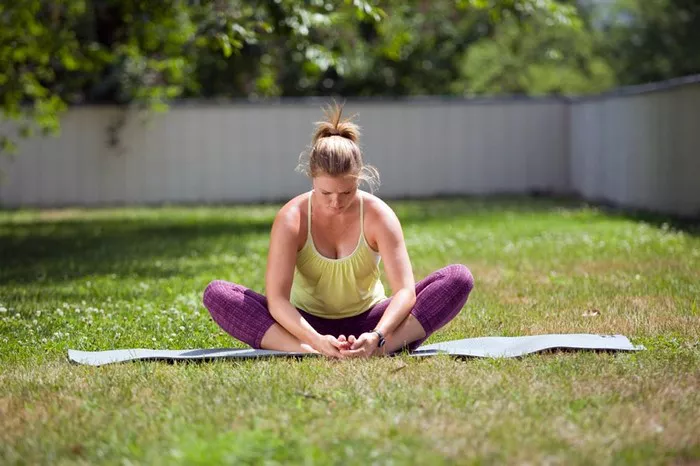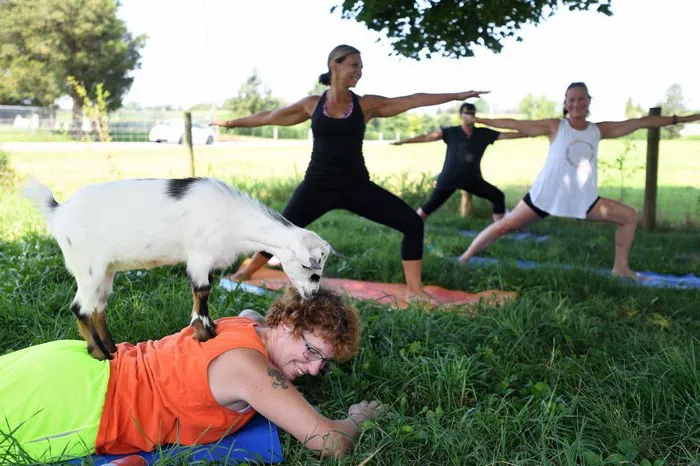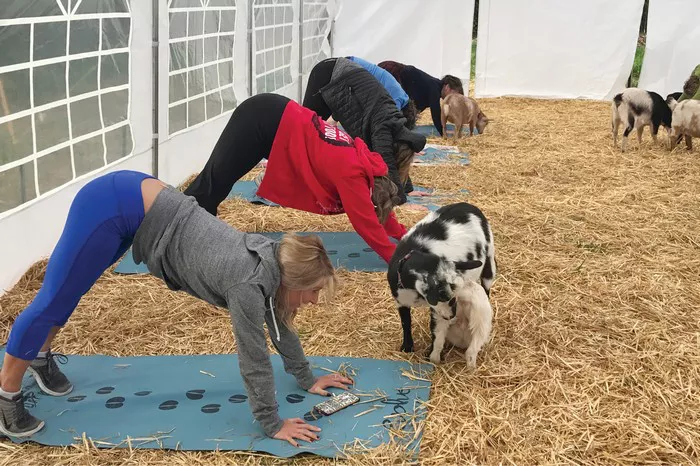Child’s Pose, or Balasana, is a fundamental yoga pose that is often practiced as a resting posture. It is a gentle, restorative pose that stretches the body while promoting relaxation and mindfulness. Despite its simplicity, Child’s Pose is deeply effective, offering both physical and mental benefits. However, to experience the full advantages of this pose, it is essential to practice it correctly. In this article, we will delve into the step-by-step process of performing Child’s Pose, explore its benefits, and address common mistakes that practitioners should avoid.
What is Child’s Pose (Balasana)?
Child’s Pose is known as Balasana in Sanskrit, which translates to “child’s posture.” This pose is often used as a resting position in between more challenging postures in a yoga sequence. It resembles a child sitting on their knees with their forehead resting on the floor, which is why it is named so. Despite its status as a resting pose, it is highly therapeutic and brings numerous benefits when done correctly.
The pose gently stretches the back, hips, and thighs, offering a sense of calmness and relief from physical and mental tension. It can also provide a gentle opening to the chest, which can enhance breathing and relaxation.
Benefits of Child’s Pose
Before learning how to perform Child’s Pose, it’s important to understand why it’s so effective:
Restores Energy: Child’s Pose offers a break from more strenuous movements, allowing the body to restore energy. It is an excellent way to cool down after a challenging yoga session.
Stretches the Back and Spine: This pose provides a deep stretch to the spine, lower back, and hips. It can be especially beneficial for those who suffer from back pain or stiffness.
Improves Flexibility: Regular practice of Child’s Pose can help improve flexibility in the hips, knees, and ankles, which are essential for many other yoga poses.
Relieves Stress and Tension: By promoting deep breathing and relaxation, Child’s Pose is a great way to reduce stress and calm the nervous system.
Promotes Mental Clarity and Focus: The gentle forward fold helps quiet the mind, making it easier to center your attention and focus on the present moment.
Soothes the Body After Intense Poses: When done after challenging asanas, Child’s Pose can help to release any built-up tension in the body, aiding in muscle recovery.
Enhances Digestion: The compression of the abdomen in Child’s Pose can gently massage internal organs, promoting digestive health.
Calms the Mind and Body: The soothing nature of Child’s Pose helps to trigger the parasympathetic nervous system, which can lower the heart rate and encourage relaxation.
How to Do Child’s Pose Correctly: A Step-by-Step Guide
Follow these detailed steps to practice Child’s Pose effectively and safely:
1. Start in a Kneeling Position
Begin by kneeling on your yoga mat. Position your knees directly under your hips with your feet either together or slightly apart. Make sure your toes are pointing straight behind you. Keep your legs parallel or slightly wider than your hips, depending on what feels more comfortable for your body.
2. Sit Back onto Your Heels
Slowly lower your hips back toward your heels, and then sit back, bringing your thighs and torso closer together. If you have tight hips, you may feel some resistance here, but do your best to gently ease your body downward. Your hips should eventually rest on or near your heels, though this may require some practice.
If sitting fully on your heels feels uncomfortable, you can place a folded blanket or cushion between your hips and heels for additional support.
3. Lower Your Torso to the Floor
Once you feel steady sitting back, begin lowering your torso down toward the mat. Allow your chest to fall toward your thighs, and your forehead to rest gently on the floor. You can keep your arms extended forward on the mat with your palms facing down, or you can allow your arms to rest alongside your body with your palms facing up.
If your forehead does not reach the mat comfortably, use a block, cushion, or folded towel under your forehead for extra support. This will prevent straining your neck and allow for a deeper relaxation.
4. Focus on Your Breath
As you settle into the pose, take slow, deep breaths. Inhale deeply through your nose, allowing your belly to rise and your lungs to fill completely with air. Exhale fully, allowing any tension to melt away as you release the breath. Keep your attention on your breath, letting it guide you into a deeper state of relaxation.
5. Release Tension in the Back
Let your body relax fully as you breathe deeply. The forward fold in Child’s Pose creates a gentle stretch along your spine, and you may feel a subtle elongation of the back as you allow gravity to assist in the stretch. Focus on releasing any tightness in the lower back, neck, or shoulders.
6. Hold the Pose
Hold Child’s Pose for several breaths or longer, depending on your level of comfort. Beginners may hold the pose for 30 seconds to 1 minute, but more experienced practitioners may hold it for several minutes. Use your breath to deepen the stretch and relax further into the position.
7. Return to a Sitting Position
When you’re ready to come out of the pose, press your palms into the floor gently and lift your torso back up to a seated position. Take your time to transition and avoid any jerky movements.
Tips for Practicing Child’s Pose Correctly
While Child’s Pose is generally a gentle posture, there are several things to keep in mind to ensure you perform it safely and effectively:
Listen to Your Body: If you feel any discomfort, make adjustments. Child’s Pose should not cause pain in your knees, hips, or back. If you experience pain, adjust the distance between your knees or add props for additional support.
Use Props: If your hips do not reach your heels, use a block or cushion under your hips or thighs. You can also place a cushion under your forehead to relieve any strain on your neck.
Avoid Arching Your Back: Ensure that your back remains straight, and avoid rounding your spine excessively. If you have tightness in your lower back, try widening your knees slightly and lowering your torso more deeply.
Don’t Force the Pose: If your body is not ready to go deep into the stretch, don’t force yourself to push deeper into the position. Child’s Pose is meant to be a restful pose, so respect your body’s limits and allow yourself to settle comfortably in the pose.
Keep Your Neck Relaxed: Allow your neck to remain relaxed, and ensure that your forehead is resting gently on the mat (or prop) without strain. Avoid tensing the neck or shoulders while in the pose.
Common Mistakes to Avoid in Child’s Pose
While Child’s Pose seems simple, beginners often make a few mistakes that can affect the pose’s benefits. Here are common mistakes to avoid:
Rounding the Back Too Much: While the spine should naturally curve in Child’s Pose, excessive rounding can strain your lower back. Ensure that you gently lengthen the spine as you lower your torso, keeping your body as long as possible.
Keeping Your Knees Too Close Together: When your knees are too close together, the hips may feel restricted, and the stretch may not be effective. Widen your knees slightly to give your body more space to fold forward. This can also reduce tension in the lower back.
Holding the Pose for Too Short a Time: Child’s Pose is a restorative posture that benefits from holding it for several breaths or longer. Don’t rush out of the pose; instead, use it as an opportunity to relax and reset.
Tensing the Shoulders: Relax your shoulders away from your ears, and avoid scrunching them up towards your neck. This will allow for a deeper stretch in the back and shoulders.
Forcing Your Forehead to the Floor: If your forehead doesn’t naturally reach the floor, use props such as a block or cushion to support your head. Forcing your forehead to the floor can lead to neck strain.
Variations of Child’s Pose
While the basic version of Child’s Pose is great for most practitioners, there are several variations to explore if you’re looking for a deeper stretch or more support:
Wide-Legged Child’s Pose: Widen your knees further apart to allow more space for the torso to fold between the thighs. This variation targets the hips and lower back more intensely.
Supported Child’s Pose: Place a bolster or cushion underneath your chest for additional support and comfort. This variation is ideal for those with knee or hip discomfort.
Thread the Needle: While in Child’s Pose, extend one arm forward and then thread it under the opposite arm, reaching the shoulder and head toward the floor. This variation provides a deeper stretch in the shoulders and upper back.
Conclusion
Child’s Pose is a powerful tool for releasing tension, improving flexibility, and calming the mind. By following the correct alignment and mindful breathing, you can unlock the full benefits of this simple yet effective posture. Whether you use it as a restorative break during your yoga practice or as a stand-alone pose to de-stress, Child’s Pose offers profound benefits for both the body and mind.
As you deepen your practice, remember to approach Child’s Pose with patience and awareness. With time, you’ll find that this pose becomes a cherished part of your yoga routine—one that helps you reconnect with your body, relax your mind, and restore your energy.
Related topics























